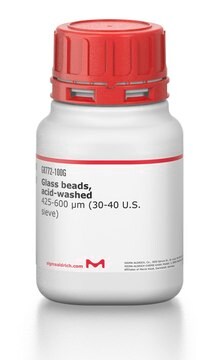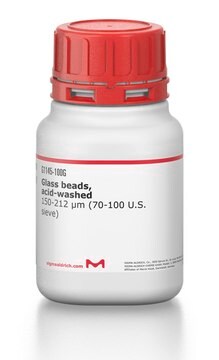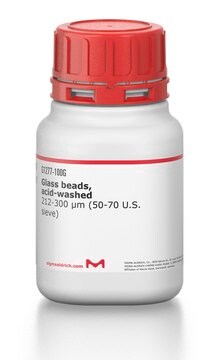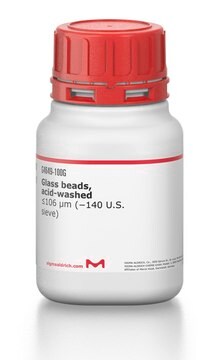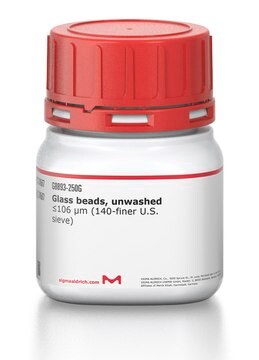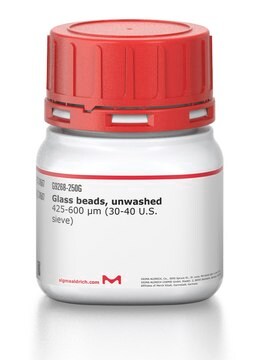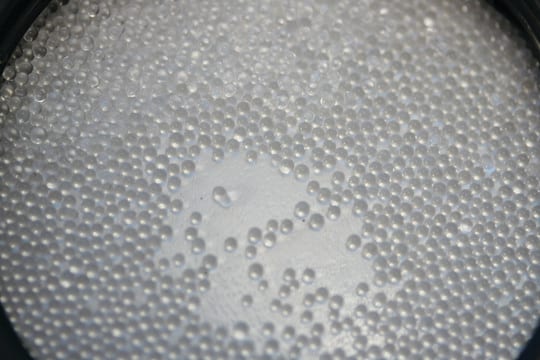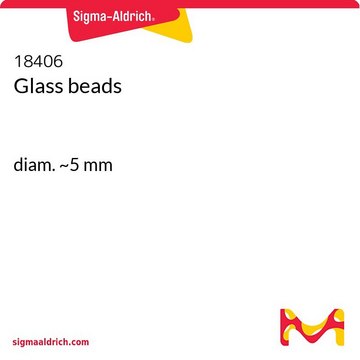G9143
Glass beads, unwashed
212-300 μm (50-70 U.S. sieve)
Sinonimo/i:
Raw Glass Beads
Autenticatiper visualizzare i prezzi riservati alla tua organizzazione & contrattuali
About This Item
Codice UNSPSC:
41100000
NACRES:
NB.22
Prodotti consigliati
Dimensione particelle
212-300 μm (50-70 U.S. sieve)
Applicazioni
Unwashed glass beads have been used for the extraction of DNA from Fonsecaea sp.
Codice della classe di stoccaggio
11 - Combustible Solids
Classe di pericolosità dell'acqua (WGK)
WGK 3
Punto d’infiammabilità (°F)
Not applicable
Punto d’infiammabilità (°C)
Not applicable
Dispositivi di protezione individuale
Eyeshields, Gloves, type N95 (US)
Scegli una delle versioni più recenti:
Possiedi già questo prodotto?
I documenti relativi ai prodotti acquistati recentemente sono disponibili nell’Archivio dei documenti.
I clienti hanno visto anche
Jalila Mohsin et al.
Mycoses, 60(9), 569-575 (2017-07-08)
Candida auris has been recognised as a problematic healthcare-associated emerging yeast which is often misidentified as Candida haemulonii by commercial systems. Correct early identification of C. auris is important for appropriate antifungal treatment and implementing effective infection control measures. Here we
Fusarium species causing eumycetoma: Report of two cases and comprehensive review of the literature.
Abdullah M S Al-Hatmi et al.
Mycoses, 60(3), 204-212 (2016-12-09)
Recently, mycetoma was added to the World Health Organization's list of neglected tropical disease priorities. Fusarium as a genus has been reported to cause eumycetoma, but little is known about the species involved in this infection and their identification. In
Anamangadan Shafeeq Hassan et al.
Medical mycology, 54(3), 287-294 (2015-12-27)
Fusarium species are reported frequently as the most common causative agents of fungal keratitis in tropical countries such as India. Sixty-five fusaria isolated from patients were subjected to multilocus DNA sequencing to characterize the spectrum of the species associated with
M J Najafzadeh et al.
Mycopathologia, 183(4), 669-677 (2018-03-06)
The black yeast genus Exophiala includes numerous potential opportunistic species that potentially cause systematic and disseminated infections in immunocompetent individuals. Species causing systemic disease have ability to grow at 37-40 °C, while others consistently lack thermotolerance and are involved in diseases
M J Najafzadeh et al.
Microbial pathogenesis, 125, 43-47 (2018-09-09)
Chromoblastomycosis is one of the most prevalent implantation fungal infections caused by melanized fungi, affecting individuals with certain risk factors with high morbidity due to its recalcitrant nature. It is difficult to identify the etiological agents and thus a suitable
Il team dei nostri ricercatori vanta grande esperienza in tutte le aree della ricerca quali Life Science, scienza dei materiali, sintesi chimica, cromatografia, discipline analitiche, ecc..
Contatta l'Assistenza Tecnica.